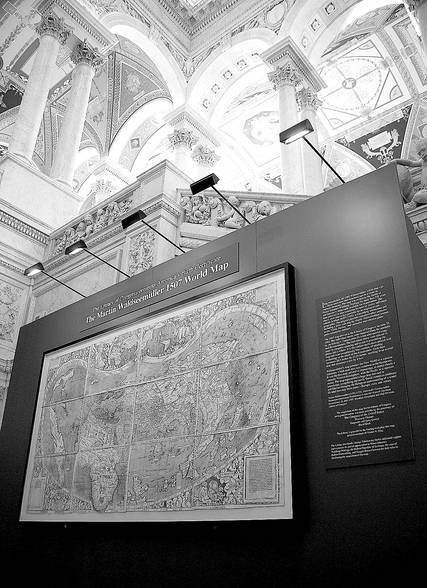The map that gave America its name
Published 1:52 am Thursday, February 28, 2008

- Cartographer Martin Waldseemuller’s 1507 map — the sole surviving copy cost the Library of Congress $10 million and is now on display there — has been called America’s birth certificate.
WASHINGTON — Five centuries ago, a maker of woodblock-print maps who lived in a small French cathedral town chiseled out the letter “A” in an area of the map that’s now Argentina.
“M” was his next letter, followed by E-R-I-C-A.
Martin Waldseemuller, the cartographer, thought he was naming a continent-sized island in the western Atlantic “after the ship’s captain who discovered it,” Amerigo Vespucci.
His misconception is why America’s birth certificate bears the wrong name.
Waldseemuller tried to erase his error in a 1513 atlas that called the region “Terra Incognita,” “Unknown Land,” and on a map published three years later that called it “Terra Nova,” or “New World.” But it was too late, Library of Congress map curator John Hessler said.
By then, Waldseemuller’s original 8-by-4-foot world map probably wallpapered the studies of scores of scholars and royals, Hessler said. A book that Waldseemuller sold with the map, titled “Introduction to Cosmography,” circulated even more widely.
Columbus’ journals remained obscure, he said, while published accounts of Vespucci’s four purported voyages from 1497 to 1504 appeared in 1505 and 1507.
“There’s a saying among historians,” Hessler said, “that Columbus discovered America and Vespucci sold it.”
Hessler theorized that the patron who sponsored Waldseemuller’s cartography at Saint-Die, France, 40 miles southwest of Strasbourg, may have had ties to Vespucci’s backers in Portugal and perhaps Florence.
Historians considered the 1507 map extinct until Jesuit researcher Josef Fisher discovered a mint-condition copy in 1901 while working in the castle library of Prince Waldburg-Wolfegg in Baden-Wurttemberg, Germany.
The current prince sold it to the Library of Congress in 2003.
Today, the map is the centerpiece of its “Exploring the Early Americas” exhibition on the second floor of the library’s Thomas Jefferson building.
Shuttered windows and dim LED bulbs protect the map from light. A thick glass case filled with argon gas — just like the cases that hold the original Constitution and Declaration of Independence, but bigger — protects the map from everything else.
It’s the world’s most valuable map by far, said William Reese, the owner of William Reese Co. of New Haven, Conn., a leading dealer of antiquarian maps.
“It’s absolutely stunning in its scale,” Reese said, and “a legendary thing for map collectors.”
Nonetheless, Washington’s street jugglers draw bigger crowds than the Waldseemuller map does, slumbering through its 500th year in a dim corridor of the nation’s library.
On the Web
The 1507 and 1516 Waldseemuller maps: www.loc.gov/exhibits/earlyamericas/maps/html/
More on the history of the 1507 map: www.loc.gov/loc/lcib/0309/maps.html






